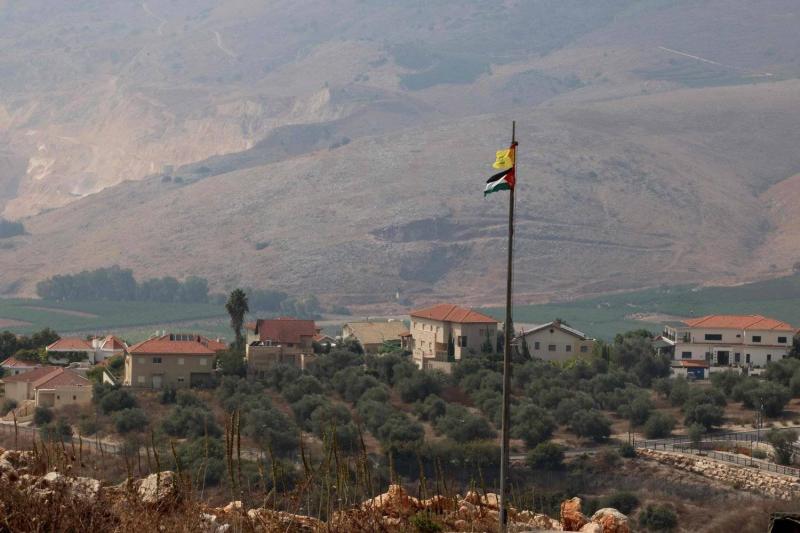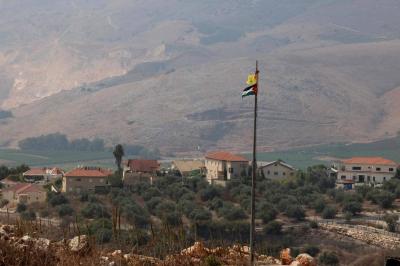The Israeli army announced today that it is conducting extensive operations to locate tunnels belonging to Hezbollah at the border between Lebanon and occupied Palestine. Major General Ori Gordin, commander of the Israel Defense Forces Northern Command, stated that Tel Aviv will not tolerate any threats, adding: "If any tunnel or threat is found, we will not keep it a secret from anyone." Gordin explained that Israel's defensive activity at the border with Lebanon focuses on various efforts to eliminate all threats, asserting that the aim is to impair Hezbollah's capabilities.
A few days ago, the Israeli newspaper Maariv published a report discussing a network of tunnels belonging to the party in Lebanon, describing it as "strategic." The report noted that the Israeli army announced on Sunday the discovery of the "largest tunnel" of Hamas in Gaza, indicating that it is 3 meters high, 50 meters deep underground, and over 4 kilometers long. Published information regarding the tunnel indicated that it was equipped with pipelines, electricity, ventilation, sewage systems, telecommunications networks, and rail tracks. Furthermore, it was noted that its floor is earthen, its walls are made of reinforced concrete, and its exit is reinforced with a metal cylinder approximately 1.5 centimeters thick.
Army spokesperson Avichai Adraee mentioned on the platform X that the nearest opening of the tunnel is about 400 meters from the Erez crossing, which separates northern Gaza from Israeli settlements. According to the report, Israeli researchers at the Alma Research Institute addressed Hezbollah's possession of a network of strategic tunnels, stating that "it is estimated that the party, after the Second Lebanon War in 2006, established a project for a network of strategic tunnels much larger than the tunnel recently revealed in Gaza with the help of North Koreans and Iranians."
According to the researchers, the tunnels owned by Hezbollah are not only local but represent an extensive regional tunnel network spanning dozens of kilometers, connecting southern Lebanon to Beirut and the Bekaa Valley. The researchers clarified, as per Maariv, that these tunnels also link various areas in southern Lebanon, adding: "There are various reports indicating that North Korean advisors significantly assisted in the construction of Hezbollah's tunnel project, which the latter considered important and, with the support of the Iranians, regarded North Korea as a professional authority in the matter of tunnels, based on the extensive experience North Korea has gained in building tunnels for military use since the 1950s."
The Israeli institute published a map showing the route of a Hezbollah tunnel starting from the Jinsnaya area in the Jezzine district to the town of Mashghara in western Bekaa. The map indicates that the tunnel route reaches 45 kilometers, passing through several areas including Barti, Kfarra, Louiza, Sajd, Zghrin, Aishiya, and Maidoun.
Previously, the newspaper Al-Sharq Al-Awsat quoted a senior officer in the Iranian Revolutionary Guard as saying that "a North Korean advisor helped construct an advanced tunnel in Lebanon measuring 25 kilometers, which includes several communication and gathering points used by Hezbollah to move and position its forces." Researchers at the Alma Institute highlight that numerous documents can provide data and information on Hezbollah's strategic tunnel project, noting at the same time that "these tunnels contain underground command and control rooms, as well as ammunition and supply depots, field clinics, and platforms designated for launching missiles of all kinds."
Maariv notes that researchers clarified that "these tunnels allow Hezbollah forces to move on foot from one location to another for the purpose of enhancing defense or executing an attack in a safe, protected, and concealed manner," adding: "Moreover, these strategic tunnels enable Hezbollah members to move using motorcycles and small to medium-sized vehicles."




